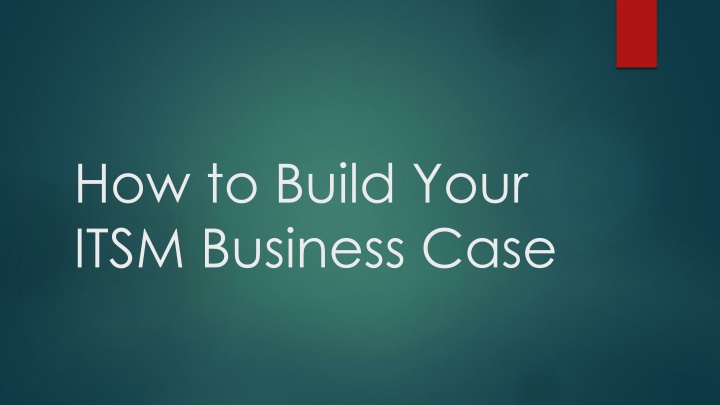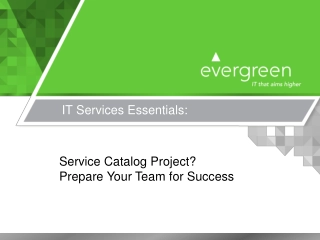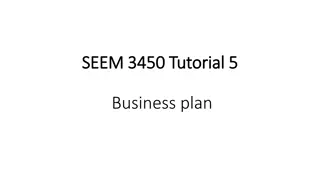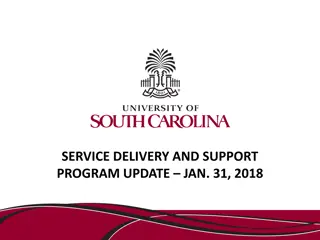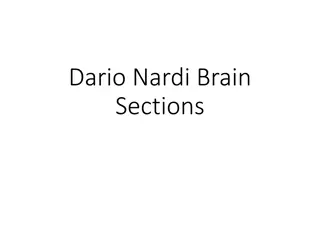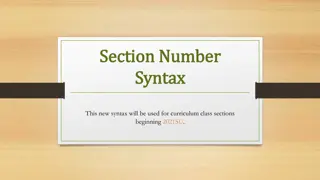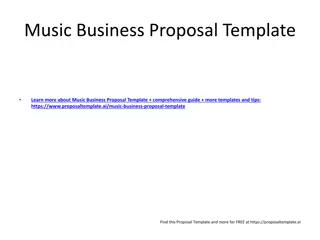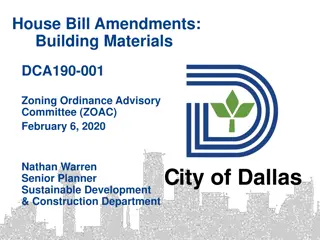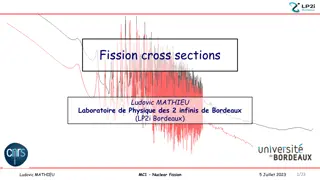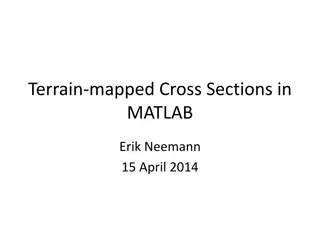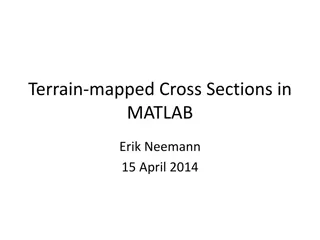Building Your ITSM Business Case - Essential Sections Explained
Learn how to create a compelling ITSM business case. Understand the 7 key sections, from defining terms to proposing solutions and gaining business value. Discover how to address pain points, improve productivity, and align processes with ITIL best practices.
Download Presentation

Please find below an Image/Link to download the presentation.
The content on the website is provided AS IS for your information and personal use only. It may not be sold, licensed, or shared on other websites without obtaining consent from the author.If you encounter any issues during the download, it is possible that the publisher has removed the file from their server.
You are allowed to download the files provided on this website for personal or commercial use, subject to the condition that they are used lawfully. All files are the property of their respective owners.
The content on the website is provided AS IS for your information and personal use only. It may not be sold, licensed, or shared on other websites without obtaining consent from the author.
E N D
Presentation Transcript
How to Build Your ITSM Business Case
The 7 Sections of an ITSM Business Case Starting with Why: Your Introduction Test your mettle: Describing your current situation Give the people what they care about: Summarize business-user productivity gains Survey says: Improving service desk agent productivity and satisfaction Science the heck out of it or not: Outlining process improvement gains Skinny it down: Clarify cost reductions from a new deployment model Your final call to action: Financial analysis and asking for the cash! 1. 2. 3. 4. 5. 6. 7.
Define your terms for both your IT and non-IT audiences What is an ITSM strategy and why do we need it? What is ITIL and what do we use it for? Why are we changing our ITSM strategy? List out your primary motivations pain points that are driving the strategy Ex., Our new strategy will increase business user productivity and improve service availability Ex., We also have three different ITSM systems residing in different functions. We need to standardize for productivity. Tell them what we are proposing to do Ex., To reach our goals, we ll be aligning and standardizing four key IT service processes to ITIL best practices. We will also be consolidating all three ITSM systems into a system residing in the Cloud (Internet-based), resulting in cost savings How will we gain business value from this change? Ex., We anticipate saving all business users 1.5 hours a week. Also, because we are moving our ITSM solution to the Internet, we anticipate xxx savings by replacing our three current ITSM systems with a single cloud-based solution. Section 1 Starting with Why: Your Introduction
Headline items: Whats wrong with our current situation? Put in all the ugly items about the ITSM situation you re trying to solve with your proposal Ex., First line resolution is 40% lower than benchmark Ex., We are unable to automate Service Level Agreements If appropriate, provide failure examples and the estimated impact of those failures Ex., An uncorrelated failure resulted in a 3-hour payment processing outage. We are not getting paid when this happens! And it happens a lot! Ex., Our de-centralized ITSM systems caused a two-day outage of online transactions, because of a problem in the change management system. Include statistics, including user satisfaction data summaries Ex., Only 20% of our users are satisfied with our responsiveness. 80% say they are unhappy or have no opinion whether they are happy or not. Ex., We lost $50K in orders last month because we couldn t fulfill our SLAs. Section 2 Test your mettle: Describing your current situation
Section 3 Give people what they care about: Summarizing business-user productivity Targets: User Productivity Gains How does the proposed solution help our users become more productive. Ex., With the new ITSM environment, each user will reclaim 1.5 productive hours each week Ex., New equipment and orders will be delivered 75% faster. How we improve Service Levels Ex., New Service Desk software will shorten incident response time from 4 to 2 hours. Ex., Automated Password reset system will reduce password reset times during off-hours from 8 hours to 5 minutes. Users no longer have to wait for IT help to reset their passwords. They can do it themselves. How we improve access to IT services and information Ex., New self-service portal will allow end users to request services and order products faster, over our current manual system, allowing users to order items any time of day or night. Ex., New mobile access for IT services will allow users to reach our services from any device, not just computers. Introducing New IT Services gains Ex., Users will now be able to request and requisition new hardware and software without IT help. Ex., New IT on-boarding process will make it easier and faster to bring new employees and all the equipment they require, on-board
Section 4 Survey Says: Improving Service Desk agent productivity Surveying agents to define ticket and efficiency rates Surveyed Service Desk agents across all three of our IT environments. Studied number of tickets resolved each day, number of tickets resolved on first contact, and ease of use for current ITSM systems Included our agents in the evaluation process for our new ITSM software Targets: Agent productivity and satisfaction 25% improvement in agent productivity, measured in tickets resolved every day 50% improvement in first line resolution 90%+ increase user satisfaction with agent responsiveness after first year of operation Retain personnel: Reduce agent turnover to less than 10% per year How: Improved knowledge sharing and distribution & Introduction of new knowledge management technology for agents, to allow agents to quickly find solutions to user requests and issues Introduce Level 0 service desk support, where users can search for solutions on the service portal satisfaction Provide support in multiple channels, including phone, email, chat, social media
Section 5 Science the heck out of it: Outlining process improvement Target: Problem management 50% increase in root cause identifications, decreasing likelihood of problem happening again 20% reduction in Mean Time to Resolve (MTTR), reducing incident durations How: Problem management process improvements Introduce separate problem management process, building on ITSM and ITIL best practices Relate and cross-reference all associated records across processes Target: Change management 20% reduction in change-related incidents 40% improvement in first-time change success rate How: Change management process improvements gains Add a formalized and automated review and approval chain Introduce mandatory risk analysis investigation
Section 6 Skinny it down: Clarify Target: List the savings you will enjoy when implementing this ITSM project These will be different and localized to your organization How: Some examples of cost reductions realized through ITSM Server & hardware reductions by consolidating systems and moving to cloud cost Rapid deployment of new hardware and software Increased productivity for users through quicker resolution of problems reductions from a new deployment model Increased productivity for service desk agents Deferred purchases when reusing hardware Changing personnel roles to perform higher-value tasks How: Balance savings against new costs that will be incurred New costs for training, internal awareness, contracts, software will be incurred Balance project savings against anticipated new costs to provide true picture of savings
Section 7 Your Final Call to Action: The financial analysis and asking for Present your financial analysis Present your funding request Presentation tips: Keep it simple Defend your numbers vehemently!! If you re just looking for buy-in rather than funding, you can leave out the financial analysis and funding request Ask for the cash or buy-in! cash
